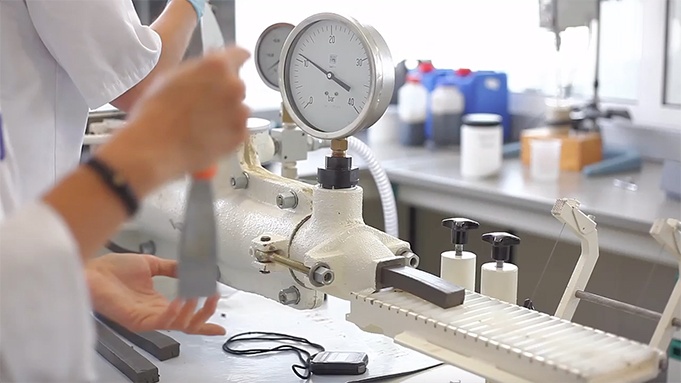 In the past, potters used to “age” their moist clay in damp cellars or storage containers for years to achieve the effects that are now possible after a few minutes of clay mixing.
In the past, potters used to “age” their moist clay in damp cellars or storage containers for years to achieve the effects that are now possible after a few minutes of clay mixing.
The plasticity of a clay body can be increased with additions of ball clays and/or bentonites. However, both types of clay need large amounts of water to make them plastic. Excessive amounts of ball clay can also make the body feel gummy and soft when moist, causing problems in the forming stages. The moist clay body can also exhibit thixotropy (a “jello”-like quality) when forms are pulled up on the wheel. Some additives exist that have the ability to make water wetter, which means that less water is required to make a clay body more plastic. The less water used to achieve plasticity in any clay body, the lower the risk of clay body defects such as excessive shrinkage, warping and cracking during the first stages of firing.
There are some organic and inorganic chemicals and additives that increase the plastic characteristics of the clay without the need for additional ball clays or bentonite.
BENEFITS
Additives exist that can replace all or part of the ball clay/bentonite component in clay body formulas. This means that we could choose less-plastic clays in the clay body formula while also decreasing the amount of total water needed to make the clay body plastic.
These additives absorb onto the clay platelet, causing a negative charge that allows the clay platelets to slide past each other in the clay/water structure. In the clay mixing process, conditioners act as a lubricant in the clay mix, offering less resistance to pug mill and mixer parts. The decreased resistance in mixing lowers energy costs and extends the life of the clay mixer and pug mill. Lowering moist clay resistance and lubrication are critical factors in tile extrusion clay body formulas. Besides, using a smaller amount of water to achieve plasticity means there is less chance of shrinkage, warping, or cracking in the drying and firing stages.
Since it substantially increases the green and dry strength and dry strength of clay bodies, these additives make less fragile ware. Increasing the durability of unfired ware is crucial for large ceramic forms that require movement in the studio or loading into a kiln.
ECONOMIC CONSIDERATIONS
Apart from a few expensive raw materials (e.g., cobalt oxide, cobalt carbonate, tin oxide, synthetic red iron oxide, nickel oxide black, nickel oxide green, nickel carbonate, silver nitrate and stains), most materials that make up formulas are inexpensive. The most expensive factor is your labor and the time required to make clay bodies.
The price/lb of additive will typically increase the price of the clay by $.01 to $.02/lb, which is not a significant cost to the overall expense of the formula. The real savings occur when the defect rate drops due to the use of the additive. If one pot, sculpture or brick or tile is saved because of using the additive, it more than pays for itself.
USING ADDITIVES
Set aside some time to find out exactly what kind clay body defect you are looking at and then see if a particular additive will work. Keep in mind that not all defects can be fixed by additives and other methods for a correction might need to be employed. An accurate diagnosis is essential for an exact correction. Fixing the problem once is better than struggling with a partial ineffective fix on a daily basis.
However, if you want to experiment on your own and are reasonably sure that an additive is an appropriate fix for the problem, start with the lowest possible amount of additive. If no change occurs, increasing the additive to the recommended amounts will often bring about the desired correction. It is always best to thoroughly test all additives in each formula. The major causes for failures are typically choosing an inappropriate additive for the situation, and using too much or too little of an additive.




